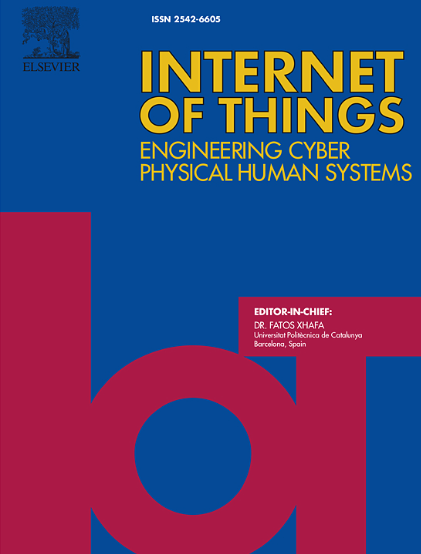Federated Hyperdimensional Computing for hierarchical and distributed quality monitoring in smart manufacturing
IF 6
3区 计算机科学
Q1 COMPUTER SCIENCE, INFORMATION SYSTEMS
引用次数: 0
Abstract
In emerging smart manufacturing, the integration of the Internet of Things (IoT) and edge devices is essential for in-situ sensing, communication, and adaptive learning. Federated Learning (FL) leverages edge-cloud collaboration to preserve data privacy and minimize communication overhead compared to centralized models. However, conventional FL approaches face significant challenges in manufacturing: (1) non-Independent and Identically Distributed (non-IID) data and diverse feature distributions complicate local model training within hierarchical, complex industrial data structures; (2) directly overwriting local models with a global model during updates causes clients to lose critical task-specific information unique to their environments; and (3) transmitting model updates causes communication overhead, limiting scalability. We propose Federated Distributed Hyperdimensional Computing (), an FL framework that employs Hyperdimensional Computing (HDC) to optimize communication for hierarchical manufacturing data. Unlike neural networks, HDC offers robust performance with lower computational demands and inherent resilience to noisy, non-IID data, enabling to naturally handle data heterogeneity and reduce computational burdens on edge devices. integrates a hierarchical graph-based learning model with a node pruning module to alleviate computational load and implements a novel client-cloud update strategy leveraging HDC’s high-dimensional representations to streamline synchronization, thereby minimizing communication costs and improving scalability. We validate through a case study on machining using a Sinumerik edge device, focusing on the geometric quality assessment of two counterbore diameters. achieved an F1-score of 95.3% and demonstrated performance improvements of up to 12.6% over state-of-the-art neural network-based FL methods, highlighting its superior efficiency and scalability in complex industrial settings.
面向智能制造分层分布式质量监控的联邦超维计算
在新兴的智能制造中,物联网(IoT)和边缘设备的集成对于原位传感、通信和自适应学习至关重要。与集中式模型相比,联邦学习(FL)利用边缘云协作来保护数据隐私,并最大限度地减少通信开销。然而,传统的FL方法在制造业中面临着重大挑战:(1)非独立和同分布(non-IID)数据和多样化的特征分布使分层复杂工业数据结构中的局部模型训练复杂化;(2)在更新过程中直接用全局模型覆盖本地模型会导致客户端丢失其环境特有的关键任务特定信息;(3)传输模型更新导致通信开销,限制了可扩展性。我们提出了联邦分布式超维计算(FedDHD),这是一个利用超维计算(HDC)来优化分层制造数据通信的FL框架。与神经网络不同,HDC具有较低的计算需求和对噪声、非iid数据的固有弹性,从而提供强大的性能,使FedDHD能够自然地处理数据异构并减少边缘设备的计算负担。FedDHD集成了基于分层图的学习模型和节点修剪模块,以减轻计算负荷,并实现了一种新颖的客户端-云更新策略,利用HDC的高维表示来简化同步,从而最大限度地降低通信成本并提高可扩展性。我们通过使用Sinumerik边缘装置进行加工的案例研究来验证FedDHD,重点关注两个顶孔直径的几何质量评估。与最先进的基于神经网络的FL方法相比,FedDHD的f1得分达到95.3%,性能提高高达12.6%,突出了其在复杂工业环境中的卓越效率和可扩展性。
本文章由计算机程序翻译,如有差异,请以英文原文为准。
求助全文
约1分钟内获得全文
求助全文
来源期刊

Internet of Things
Multiple-
CiteScore
3.60
自引率
5.10%
发文量
115
审稿时长
37 days
期刊介绍:
Internet of Things; Engineering Cyber Physical Human Systems is a comprehensive journal encouraging cross collaboration between researchers, engineers and practitioners in the field of IoT & Cyber Physical Human Systems. The journal offers a unique platform to exchange scientific information on the entire breadth of technology, science, and societal applications of the IoT.
The journal will place a high priority on timely publication, and provide a home for high quality.
Furthermore, IOT is interested in publishing topical Special Issues on any aspect of IOT.
 求助内容:
求助内容: 应助结果提醒方式:
应助结果提醒方式:


